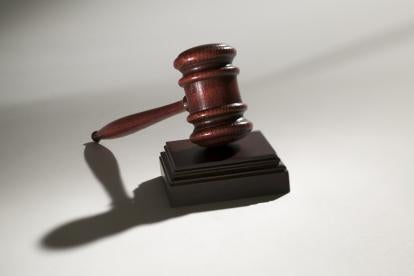Trademark litigation includes two similar types of proceedings. First, and most common, issues of trademark infringement and cancellation of a mark may be raised in a trial (i.e., a traditional fight in either State Court or Federal District Court before a judge or jury involving oral testimony). Second, and less common, issues of trademark registration may be raised in a trademark opposition or cancellation proceeding before the Trademark Office. These proceedings are primarily conducted in writing and are governed by administrative rules published in the Federal Register based on the Federal Rules of Civil Procedure. While a trial may result in monetary damages or an injunction preventing a party from using a mark, the Trademark Office merely has the authority to grant or cancel federal trademark registrations.
Since the Trademark Office's process does not allow for litigants to receive monetary awards, injunctions, or even a determination of infringement, entering the Trademark Office for a cancellation or opposition simplifies the proceedings to focus on a limited number of key issues, such as whether a likelihood of confusion exists between a registered mark and another mark. Along with their limited focus and less formal nature, litigants often found comfort in a the lower costs involved in proceedings before the Trademark Office. Generally, once a trademark registration was cancelled, the owner of the mark that was cancelled would understand that a claim for infringement in court was not likely to succeed and would stop using the mark.
In B&B Hardware, Inc. v. Hargis Industries, Inc., the United States Supreme Court was faced with the question of "[w]hether the Trademark Trial and Appeal Board's (the "TTAB" or the "Board") finding of a likelihood of confusion precludes Hargis from relitigating that issue in infringement litigation, in which likelihood of confusion is an element." The long-standing dispute (almost 20 years) between the parties involved in the decision regarded the trademarks SEALTIGHT and SEALTITE. In 1996, Hargis applied for registration of its mark, SEALTITE. B&B opposed the registration based on an alleged likelihood of confusion of Hargis's trademark with B&B's own federally registered mark, SEALTIGHT. After applying the standard multi-factor likelihood of confusion test, the TTAB decided in favor of B&B and held that a likelihood of confusion existed between the marks.
At the same time as the proceedings before the TTAB, B&B sued Hargis for trademark infringement in Federal District Court. After receiving a favorable outcome in the proceeding before the TTAB, B&B argued in District Court that Hargis could not contest the TTAB's determination that a likelihood of confusion existed due to the preclusive effect of the TTAB's decision. The District Court disagreed with B&B and allowed the jury to hear the evidence and decide on the issue of confusion. The jury returned a verdict for Hargis, finding that there was no likelihood of confusion between the marks. The parties appealed the verdict, including the issue of the preclusive effect of the TTAB decision. The Eighth Circuit affirmed the decision of the District Court. The parties then petitioned for, and were granted, certiorari on the issue by the U.S. Supreme Court.
The Supreme Court reversed the decision of the Eighth Circuit and remanded the case for further proceedings, holding that as long as the ordinary elements of issue preclusion are met and the usages of the marks are materially the same, a finding that a likelihood of confusion exists by the TTAB should have preclusive effect in District Court proceedings.
The doctrine of "res judicata" or "issue preclusion" states that litigants should not get two bites at the same apple, or two chances to argue over the same issue. Thus, if the Trademark Trial and Appeal Board found overlap (i.e., likelihood of confusion) between two marks (despite using the simplified tools involved in proceedings before the Trademark Office), then a District Court should honor the TTAB's determination and not force the parties to relitigate the issue.
Prior to this decision, if a case was simultaneously pending in District Court and before the TTAB, the TTAB would readily stay its determination until the litigation in District Court was resolved. Because of this, any time one of the parties to an opposition or cancellation proceeding became agitated, they would file a concurrent action before a District Court. Following the Supreme Court's decision, it is unclear if the TTAB will continue to grant this courtesy.
Trademark oppositions and cancellations must now be taken very seriously. While the TTAB cannot award damages or find infringement, its decisions could now be used as grounds for finding infringement in District Court. For example, a party who defaults in a cancellation proceeding may well lose the right to defend itself properly in District Court if a subsequent action is filed. Going forward, mark owners with proceedings before the TTAB must consider whether to intentionally abandon a trademark application or registration in order to avoid an adverse decision that could have far-reaching effects.


 i
i


